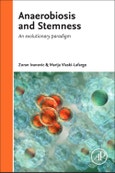Anaerobiosis and Stemness: An evolutionary paradigm provides a context for understanding the many complexities and evolutionary features of stem cells and the clinical implications of anaerobiosis stem cells. Combining theoretical and experimental knowledge, the authors provide a broad understanding of how the absence or low concentration of oxygen can play an influential role in the maintenance and self-renewal of stem cells and stem cell differentiation. This understanding has clinical implications for the fields of regenerative medicine, cancer biology and transplantation, as well as cell engineering and cell therapy. Anaerobiosis and Stemness is an important resource for stem cell and developmental biologists alike, as well as oncologists, cancer biologists, and researchers using stem cells for regeneration.
Please Note: This is an On Demand product, delivery may take up to 11 working days after payment has been received.
Table of Contents
TABLE OF CONTENTS: PREFACE SPECIAL REMARKS 1) What entity could be called a "stem cell? 2) In situ "normoxia vs. "hypoxia Part I: ANAEROBIOSIS AND STEM CELL ENTITY 1) The "hypoxic stem cell niche 2) Low O2 concentrations and the maintenances of stem cells ex vivo 3) Quiescence/proliferation issue and stem cell niche 4) Metabolic peculiarities of the stem cell entity: energetic metabolism and oxidative status 5) "Hypoxic signaling, metabolic type, quiescence, self-renewal and differentiation
Part II: ANAEROBIC-TO-AEROBIC EUKARYOTE EVOLUTION A PARADIGM FOR STEM CELL SELF-RENEWAL, COMMITMENT AND DIFFERENTIATION? 1) Evolution of eukaryotes with respect to the appearance and rise of oxygen in the atmosphere: anaerobiosis, facultative aerobiosis and aerobiosis 2) Evolution of mitochondria in eukaryotes and mitochondria "maturing from stem cells to committed progenitors and mature cells 3) Evolutionary origins of stemness: relationship between self-renewal and ancestral eukaryote biology; conservation of self-renewal principle in parallel with the adaptation to O2 4) Metabolic and genetic features of ancestral eukaryotes vs. metabolism and "master pluripotency genes of stem cells 5) Some other features concerning the analogy "stem cells primitive eukaryotes": ABC transporters' anaerobiosis/stemness link 6) Harnessing anaerobic nature of stem cells for the use in regenerative medicine 7) Cancer stem cell case and evolutionary paradigm








